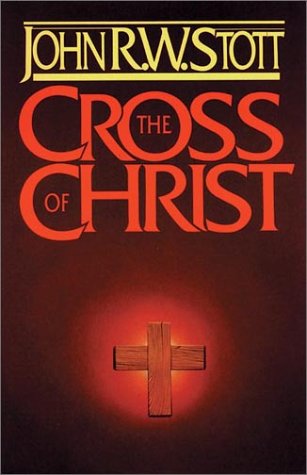 This time of year I usually try to observe Lent by engaging in a spiritual discipline of some kind that will help me to focus on the events leading up to the crucifixion and resurrection of Jesus.
This time of year I usually try to observe Lent by engaging in a spiritual discipline of some kind that will help me to focus on the events leading up to the crucifixion and resurrection of Jesus.
This year I decided to re-read John R.W. Stott’s The Cross of Christ, which I first read some 35 years ago when I was in seminary. More recently, I read Stott’s biography Basic Christian: The Inside Story of John Stott by Roger Steer, and he points out that Stott considered The Cross of Christ to be his magnum opus, his greatest accomplishment as a writer. I have read many of Stott’s books, and they are all excellent. But I would have to agree: The Cross of Christ is more than just another John Stott book. It’s a beautifully written commentary on the central symbol of the Christian faith and what it means for us today.
This reading of The Cross of Christ is probably my fourth or fifth time through the book, so my copy is a bit tattered and underlined throughout. But familiar passages move me to tears every time. One of my favorite passages in the book appears in Stott’s chapter on “Suffering and Glory,” in which he suggests how the cross sheds light on the ages-old question of how a loving God can allow or co-exist with the real world of pain and suffering:
I could never myself believe in God, if it were not for the cross. The only God I believe in is the One Nietzche ridiculed as ‘God on the cross’. In the real world of pain, how could one worship a God who was immune to it? I have entered many Buddhist temples in different Asian countries and stood respectfully before the statue of the Buddha, his legs crossed, arms folded, eyes closed, the ghost of a smile playing around his mouth, a remote look on his face, detached from the agonies of the world. But each time after a while I have had to turn away. And in imagination I have turned instead to the lonely, twisted, tortured figure on the cross, nails through hands and feet, back lacerated, limbs wrenched, brow bleeding from thorn-pricks, mouth dry and intolerably thirsty, plunged in God-forsaken darkness. That is the God for me! He laid aside his immunity to pain. He entered our world of flesh and blood, tears and death. He suffered for us. Our sufferings become more manageable in light of his. There is still a question mark against human suffering, but over it we boldly stamp another mark, the cross which symbolizes divine suffering. The cross of Christ is God’s only self-justification in such a world as ours.



